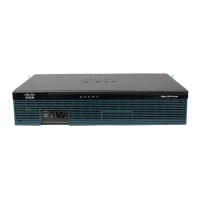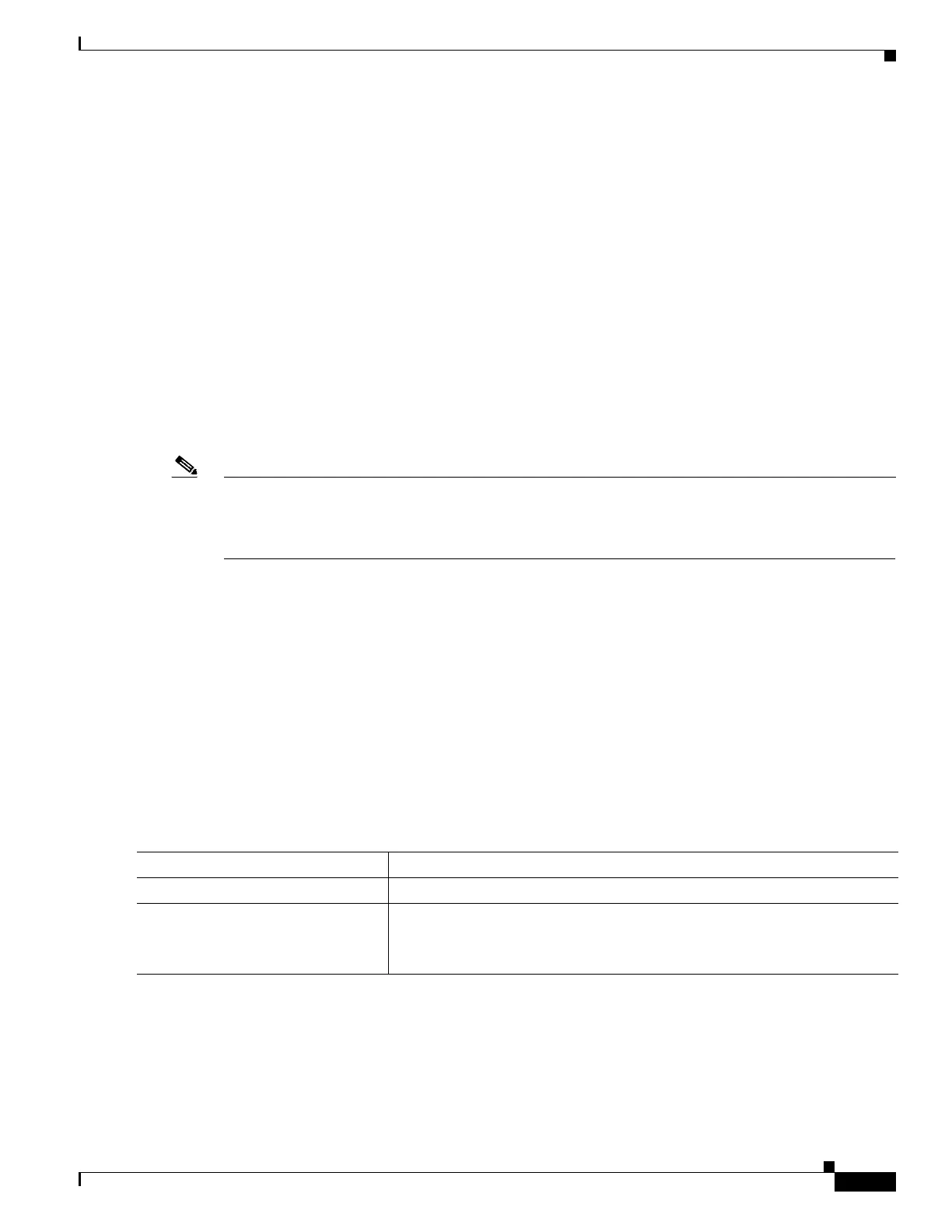267
Cisco 3900 Series, Cisco 2900 Series, and Cisco 1900 Series Integrated Services Routers Generation 2 Software Configuration Guide
Chapter Configuring Radio Settings
Configuring Radio Data Rates
You can configure the wireless device to set the data rates automatically to optimize either the range or
the throughput. When you enter range for the data rate setting, the wireless device sets the 1-Mb/s rate
to basic and sets the other rates to enabled.
The range setting allows the access point to extend the coverage area by compromising on the data rate.
Therefore, if you have a client that cannot connect to the access point while other clients can, the client
might not be within the coverage area of the access point. In such a case, using the range option will help
extend the coverage area, and the client may be able to connect to the access point. Typically the
trade-off is between throughput and range.
When the signal degrades (possibly due to distance from the access point), the rates renegotiate in order
to maintain the link (but at a lower data rate). A link that is configured for a higher throughput simply
drops when the signal degrades enough that it no longer sustains a configured high data rate, or the link
roams to another access point with sufficient coverage, if one is available.
The balance between the two (throughput vs. range) is a design decision that must be made based on
resources available to the wireless project, the type of traffic the users will be passing, the service level
desired, and as always, the quality of the RF environment.When you enter throughput for the data rate
setting, the wireless device sets all four data rates to basic.
Note When a wireless network has a mixed environment of 802.11b clients and 802.11g clients, make sure
that data rates 1, 2, 5.5, and 11 Mb/s are set to required (basic) and that all other data rates are set to
enable. The 802.11b adapters do not recognize the 54 Mb/s data rate and do not operate if data rates
higher than 11 Mb/s are set to required on the connecting access point.
To configure the radio data rates, follow these steps, beginning in privileged EXEC mode.
SUMMARY STEPS
1. configure terminal
2. interface dot11radio {0 | 1}
3. speed parameters
4. end
5. copy running-config startup-config
DETAILED STEPS
Command Purpose
Step 1
configure terminal Enters global configuration mode.
Step 2
interface dot11radio {0 | 1} Enters interface configuration mode for the radio interface. The 2.4-GHz and
the 802.11g/n 2.4-GHz radios are radio 0.
The 5-GHz and the 802.11n 5-GHz radio is radio 1.

